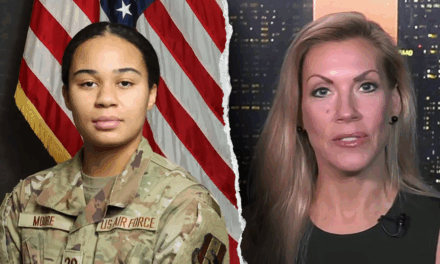In the dynamic intersection of fashion and politics, the role of style can often go unrecognized but holds significant sway over societal norms and attitudes. Recently, conservative fashion magazine editors have stepped forward to illuminate how the world of fashion is often perceived as a politically coded arena predominantly leaning toward liberal ideals. By delving into this subject, they shed light on the nuanced ways in which fashion is intertwined with political expressions, highlighting both conscious choices and subconscious associations.
Fashion, by its nature, is a form of communication. What individuals choose to wear can convey their values, beliefs, and even political viewpoints. The conservative fashion editors contend that many styles and trends emerging from mainstream fashion often reflect liberal ideologies, which can be alienating or unwelcoming to those with conservative views. This perspective showcases the broader societal narrative that has evolved alongside fashion, maintaining that clothing is deeply symbolic—a way of aligning with or distancing from particular worldviews.
One point raised by these editors is the historical evolution of fashion in relation to shifting political climates. As fashion progressed through the decades, the waves of cultural and political revolutions that defined each era had significant influences on sartorial choices. For instance, the counterculture of the 1960s and 1970s, with its associated movements advocating for civil rights, feminism, and anti-war sentiments, produced styles that resonated deeply with progressive agendas. This legacy has seemingly persisted, with many contemporary fashion brands promoting messages that align with liberal values.
This phenomenon raises questions about the inclusivity of the fashion industry. Conservative editors argue that the common associations of certain styles—such as bold colors, flowing silhouettes, and edgy, avant-garde pieces—often align with progressive attitudes and are implicitly designed to serve a particular ideological narrative. They claim this creates an inadvertent barrier for those who may prefer more classic or subdued styles associated with conservative ideologies, effectively signaling that they may not fit into the prevailing fashion discourse.
In discussing the impact of high fashion editorials and runway shows, these conservative voices emphasize how influential figures in fashion often shape perceptions through their choices. When high-powered editors or prominent designers exhibit affinity for specific political movements or social statements, their designs resonate with the public’s understanding of style and taste. This influence can perpetuate a narrative, creating a cycle where alternative viewpoints or aesthetic choices are marginalized.
Another focal point in the conversation around politically charged fashion is the concept of “activista,” a term coined to describe the modern individual who embraces fashion as a form of activism. Editors note that while activism can be a powerful platform for change, it often positions fashion as a potential mode for expressing political dichotomies rather than personal identity. This framing not only influences consumers’ shopping tendencies but also leads to an entrenched culture where those who do not identify with these left-leaning styles may feel out of place, leading to their disenfranchisement.
Furthermore, the editors emphasize the role of media in perpetuating these associations. Fashion magazines often showcase trends that align with liberal causes—sustainable fashion, body positivity, and social justice—while neglecting conservative ideologies. This reporting style may lead to the conclusion that fashion is inherently left-leaning, further alienating a significant portion of the population. By showcasing products and endorsements that seem to resonate solely with progressive ideals, magazines risk creating a narrative monopoly where conservative choices are rendered invisible.
However, it is essential to recognize that this landscape is not entirely fixed. The editors expand on the emergence of numerous brands that strive to offer a balance, catering to diverse political beliefs without forsaking style. These brands often lean into classic aesthetics, appealing to conservative consumers who favor tailored looks, structured silhouettes, and more traditional designs without abandoning contemporary elements that reflect modern sensibilities. It is within this diversification that the conservative fashion narrative begins to stitch itself into the fabric of modern society.
As discussions continue surrounding the culture of fashion, it becomes evident that editors wish to emphasize that style should not be constrained by political affiliations. They aim to create avenues for conversations that allow for differing viewpoints to coexist within the fashion narrative, promoting understanding and appreciation of varied styles. The rise of social media has facilitated this dialogue, as platforms provide a space for showcasing diverse styles, enabling consumers to share their perspectives and engage in discussions surrounding fashion beyond the traditional confines of magazine pages.
The challenge remains, however, for designers and brands to recognize the political dimensions embedded within their collections. While it is natural for creative expression to reflect personal beliefs, balancing this with the broader audience’s tastes—who may not all align with the same political spectrum—can create complexities in brand identity and customer relationships. The responsibility lies in navigating these dynamics while remaining true to the core values that fashion embodies: individuality, creativity, and self-expression.
It is also worthwhile to acknowledge that the influence of culture and politics on fashion is reciprocal. As public sentiment evolves, fashion often adapts, reflecting societal attitudes and, at times, reshaping them. The potential for fashion to be a unifying front, bringing together divergent political views through shared aesthetic appreciation, is a compelling proposition. The editors argue that acknowledging this diversity is crucial in paving the way for an inclusive fashion industry that genuinely caters to all.
In conclusion, the dialogue around fashion and politics serves as a mirror reflecting societal structures and beliefs. Conservative fashion magazine editors are courageously addressing the challenge of inclusivity within the industry, advocating for the recognition that style is multifaceted and operates within a spectrum of political beliefs. By promoting a more inclusive view of fashion, they hope to extend the discourse beyond political affiliations and foster an environment where all expressions of style are seen as valid and valuable, reimagining fashion as a realm of unity rather than division.
As this discourse continues to evolve, it becomes increasingly evident that the intersection of fashion and politics is a rich tapestry of narratives, one that should celebrate differences rather than shun them. The editors underscore the necessity for a spectrum of ideas within the fashion industry, propelling the notion that style, in all its forms and associations, belongs to everyone.































